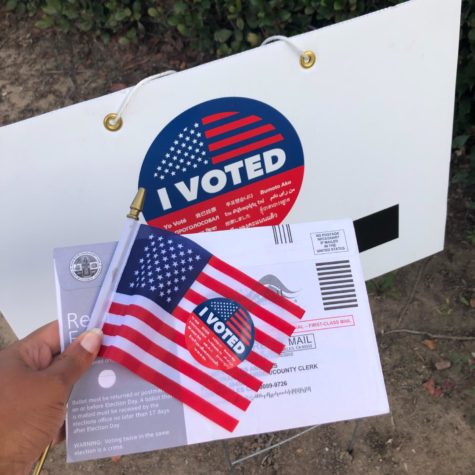
For first-time voters, voting on Election Day is an initiatory rite into American civic duties. In the 2022 midterm elections, each of the 435 U.S. House of Representative seats, 34 U.S. Senate seats and 36 gubernatorial seats are up for re-election.
With midterms less than a week away, it is important to know how to enact your civic duty. These candidates can directly affect your life, and making your voice heard is of utmost importance. For first-time voters, the concept of voting may seem extremely strange and difficult, but in reality it couldn’t be easier.
Don’t know how to vote? Here are some steps to prepare for the Nov. 8 elections.
Register to Vote
Before voting, the first step is to register. USA.gov makes this free process simple by providing necessary links and guides to begin the voting process in your state of residence. The site also applies voter registration deadlines along with links to confirm and change your registration.
In order to register, voters must be a United States citizen, be 18 years old by election day and meet their state’s residency guidelines. Hopeful voters can register online, by mail or in person at their local election office.
Voter registration deadlines vary from state-by-state. New York’s deadline is Oct. 14, New Jersey’s is Oct. 18 and Pennsylvania’s is Oct. 24.
Apply and Complete a Mail-In Ballot
If you will not be in your voting district on Election Day, apply for a mail-in or absentee ballot. Each state has their own guidelines for requesting mail-in ballots, so it is extremely important to research each state’s criteria.
Many states require voters to provide a “valid excuse” for not voting on Election Day, while other states allow any voter to vote by absentee ballot, even if they are able to vote in person on Election Day. Other states only require voters to request a ballot if they need it sent to a different address. New York lists certain qualifications in order to request an absentee ballot, while New Jersey and Pennsylvania allow any voter to request a ballot without an excuse.
Most states enable voters to request their ballots in person or online via their voter and election information portal.
Each state has various mail-in ballot deadlines. In New York, voters must request their ballot online or by mail by Oct. 24, request an absentee ballot in person by Nov. 7 and return ballots by Nov. 8. In New Jersey, voters must request ballots by Nov. 1 and return the ballot by mail or in-person by 8 p.m. on Nov. 8. In Pennsylvania, applications must be received by Nov. 1 and must be returned on Nov. 8.
Once your ballot arrives in the mail, be sure to read the printed instructions on how to complete the ballot and send it by the designated deadline. Vote.org offers links to track ballots in each state.
Vote in-Person
If you choose to vote in-person on Nov. 8, the U.S Elections Assistance Commission provides voter guidance. Created as a result of the 2002 Help America Vote Act, it serves as “a national clearinghouse and resource of information regarding election administration.” Their website offers resources for voters and election officials to inform the public of election administration.
In order to vote in-person on Election Day, voters must cast their ballots at their designated polling locations. Polling locations are based on home addresses, and are subject to change each election cycle. USA.gov provides links to find polling places across the United States.
For first-time voters, most states require a valid photo or non-photo ID.
Polls hours vary state-by-state. New York polls are open from 6 a.m. to 9 p.m., New Jersey polls are open 6 a.m. to 8 p.m. and Pennsylvania poll hours are 7 a.m. to 8 p.m. If voters are in line before or at the time the polls close, they are still able to cast their ballots. Click here to find the hours of your polling place.
Research Your Candidates
Investigate your local and state candidates and find out where you stand on their issues. If you’re unsure of your stances, the nonpartisan organization Votesmart.org features factual information on each candidate. Ballotpedia is an “encyclopedia for American politics” that features candidate lists, mock ballots and candidate endorsements.
In a world full of misinformation, it is important to stay up-to-date on your candidates and fact-check information. Research how candidates have responded to issues, organizations they have funded, attend or watch a debate and check local media outlets’ coverage of candidates.
Being an involved citizen helps you make informed decisions on Election Day. While many of these links are extremely helpful, it is important to note that every state has its own election and voting rules. Check with your local or state election office to obtain current information.









